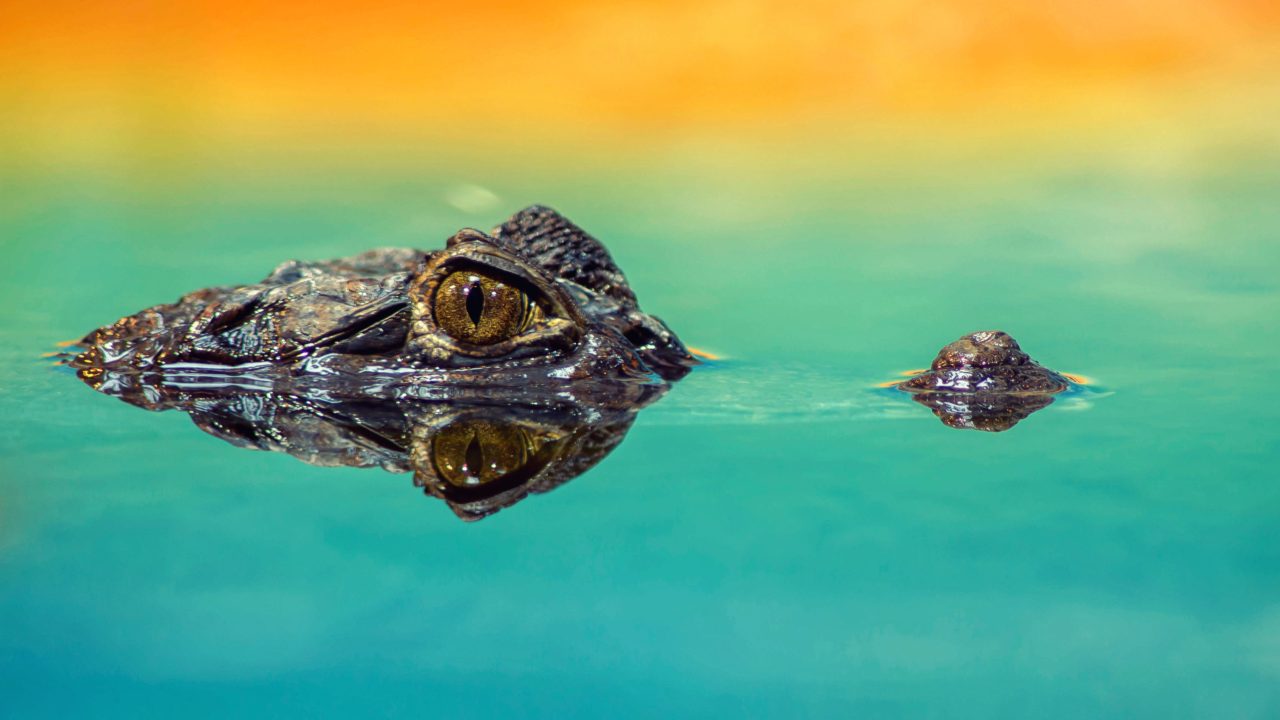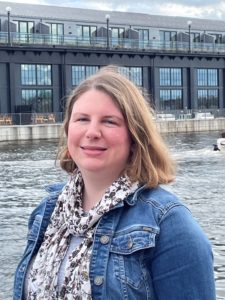 This month’s Industry Insider Interview is with Catherine Laudone, a children’s book editor at Paula Wiseman Books. Prior to joining Simon & Schuster in 2013, she graduated with a BFA in Writing, Literature, and Publishing from Emerson College and completed several internships at children’s publishing houses and literary agencies, including HarperCollins and Sourcebooks. She is also currently pursuing her MFA in Writing for Children and Young Adults at Vermont College of Fine Arts.
This month’s Industry Insider Interview is with Catherine Laudone, a children’s book editor at Paula Wiseman Books. Prior to joining Simon & Schuster in 2013, she graduated with a BFA in Writing, Literature, and Publishing from Emerson College and completed several internships at children’s publishing houses and literary agencies, including HarperCollins and Sourcebooks. She is also currently pursuing her MFA in Writing for Children and Young Adults at Vermont College of Fine Arts.
Over the last nine years, she’s edited picture books, middle grade, and young adult novels in a wide range of genres. Her authors’ titles have been New York Times bestsellers, Junior Library Guild selections, Indies New Voices and Indies Kids’ Next Pick selections. They have also been chosen for state reading and award longlists, and received starred reviews.
When Catherine isn’t editing, writing, or reading, she likes to throw pottery, crochet, bake, play tennis, and watch Gilmore Girls reruns. And, quite reasonably, she’s a devout fan of all things chocolate.
Let’s get to the interview so we can learn more!
RVC: What aspect/part of you today gives away where you’re from and how you were raised?
CL: Growing up on Long Island, I was very close to my extended family—especially my Nana and cousins. My immediate family moved to New Jersey when I was in seventh grade, but we maintained those close relationships over the years. So, my love of stories centered on family and intergenerational relationships reflects my upbringing.
RVC: What influence did your family have on your love for stories?
CL: Growing up, every week my mom took my brothers and I to the library. We even had a designated “library bag” that we would load up with books. And both my parents would read to us every night before bed, fostering a love of stories and books that continues today.
RVC: That’s such a familiar story with agents and editors–I love it. Now, when you chose to attend Emerson College’s BFA program, were you planning to become a full-time writer and editor?
CL: Yes, going into college I knew I wanted to write and edit children’s books. So, I chose Emerson’s program because it had the best of both worlds—writing and publishing within one degree.
RVC: What lesson from your time at Emerson do you find most useful today?
CL: Emerson College is where I learned to “speed read” and read multiple books at a time. These skills have been helpful, as I often have to multitask and work on many different projects daily as an editor.
RVC: Care to share a tip on how to speed read?
CL: Speed reading is a fancy word for skimming. Sometimes when another colleague shares a longer novel for second reads, I skim or “speed read” several chapters to get a sense of voice and the story’s overall direction. Practice is the best tip I can give for learning to speed read or skim.
RVC: How did you land internships in publishing? And how valuable were those in terms of getting a full-time job as an editor?
CL: I looked up internships online on my own, applied, and interviewed for them. I was fortunate that my parents lived about an hour outside of New York City, so I was able to live at home and intern in the city during the summers, between college semesters. I did a few internships in Boston during my semesters as well. Those internships gave me real-world experience in the children’s publishing industry and helped when it came time for me to apply for entry level editorial jobs in children’s publishing.
RVC: I’m always interested in imprints named after someone because they feel so specific and distinct. Now, I have my own answer here, but I’m curious—in your mind, what makes a Paula Wiseman book a Paula Wiseman book?
CL: A Paula Wiseman book celebrates the joy of being a child—the excitement and magic of new experiences, learning, and building relationships. And a Paula Wiseman book reflects the wonderfully diverse world that we all live in.
RVC: What’s the story behind the first picture book you acquired?
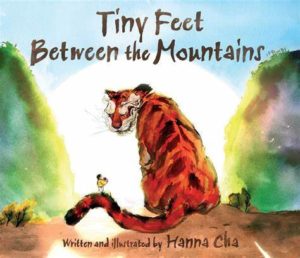 CL: Some graduating seniors from RISD [Rhode Island School of Design] came into the office one day for a portfolio review. I stopped to flip through the portfolio of a talented young woman named Hanna Cha. There was a stunning color sketch of a girl riding on a huge tiger’s back. I asked “Is there a story that goes with this art?” Hanna explained that she had a partial rough dummy that she’d done for school but the story itself was unfinished. I asked her to send it to me and from there we worked on the story together until it was ready to share at my editorial staff meeting. I was given the greenlight to acquire it and that story became Tiny Feet Between the Mountains.
CL: Some graduating seniors from RISD [Rhode Island School of Design] came into the office one day for a portfolio review. I stopped to flip through the portfolio of a talented young woman named Hanna Cha. There was a stunning color sketch of a girl riding on a huge tiger’s back. I asked “Is there a story that goes with this art?” Hanna explained that she had a partial rough dummy that she’d done for school but the story itself was unfinished. I asked her to send it to me and from there we worked on the story together until it was ready to share at my editorial staff meeting. I was given the greenlight to acquire it and that story became Tiny Feet Between the Mountains.
RVC: If you had to summarize the most important lesson you learned over the start-to-finish process of that book getting published, what would it be?
CL: I learned that there is no “formula” for editing picture books. I had shadow-edited other picture books with my supervisor prior to acquiring this one, but parts of his process didn’t naturally fit into how Hanna and I worked together. So, I adapted his process based on what worked for us and figured out the rest as I went. It was Hanna’s debut picture book as well, so it was nice to experience the learning curve together. That’s what makes editing picture books—or any book for that matter—so much fun. Each story is a unique puzzle waiting to be pieced together.
RVC: Describe a typical workday as an Editor at Paula Wiseman Books.
CL: Things have changed since the pandemic. I used to start my day with a long commute and lots of in-person interactions, but now I work from home and Zoom with colleagues. But the job has remained the same. On a typical day, I am providing feedback on interiors of a picture book, editing a novel, giving my thoughts on a jacket design and art, writing catalog copy, sending requested materials to our Sales or Publicity teams, answering agents’ and authors’ questions via email, and attending meetings and acquiring books.
It’s a fast-paced, hands-in-every-cookie-jar kind of job and that’s what I love about it. I’m never bored.
RVC: How much time do you have these days to read for pleasure?
CL: For a few years I fell behind on reading for pleasure—when you’re reading all day for work, sometimes it’s the last thing you want to do when you’re off the clock. But starting my MFA program at Vermont College of Fine Arts a year and a half ago made me get back into reading. I read a minimum of 50 children’s books per semester and annotate/write critical essays on some of them.
RVC: Wow!
CL: Today, I make time to read for pleasure (and for school), and I go to the library once a week to check out picture books and graphic novels. Although I will admit that I consume novels mostly in the audiobook format these days. It’s easier to listen while doing the dishes, making dinner, or driving somewhere than it is to find time to sit down and read a physical copy.
RVC: No shame there–I do the same, which helps me justify having a commute. Please tell me about a time when things didn’t go the way you wanted.
CL: There have been times when I gave notes and asked an author to do a revision and resubmit, in the hopes that I could bring the revision to my staff meeting and get the greenlight to take it to acquisitions. But sometimes those projects I’ve given notes on just don’t pan out and I have to pass. It’s disappointing in those cases but I always hope that my notes helped the author make the story a little stronger and that they will find the right home for their project, even if it’s not with me.
RVC: What’s one of your favorite success stories as an editor?
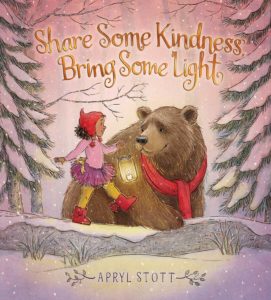 CL: That’s easy—Share Some Kindness, Bring Some Light, Apryl Stott’s New York Times bestselling debut picture book is one of my favorite success stories. When we used to be in the office, I would sometimes get postcards from illustrators advertising their work. One day I received one from Apryl, showing a little girl and a bear in the wintry woods. The bear wore a Santa Lucia wreath and red scarf. I was so charmed by the art that I cold-emailed Apryl’s agent and asked if she had a story for these two adorable characters.
CL: That’s easy—Share Some Kindness, Bring Some Light, Apryl Stott’s New York Times bestselling debut picture book is one of my favorite success stories. When we used to be in the office, I would sometimes get postcards from illustrators advertising their work. One day I received one from Apryl, showing a little girl and a bear in the wintry woods. The bear wore a Santa Lucia wreath and red scarf. I was so charmed by the art that I cold-emailed Apryl’s agent and asked if she had a story for these two adorable characters.
From there, Apryl and I spent months working on the story together and I went on to acquire it. Fast-forward to when the book comes out during the height of the pandemic in 2020, and Barnes & Noble picks it for a holiday promotion! Then the Library of Congress picks the story for their National Holiday Read-Aloud! With all this love for Apryl, the book hits the New York Times bestseller list for a few consecutive weeks. It was a major milestone for both me and Apryl and a true homegrown author-illustrator success story.
RVC: What do you think of the state of kidlit right now?
CL: I think the kidlit landscape is in a state of evolution. Sure, there are some growing pains that come with that, but I’m encouraged to see so many new voices emerging and telling the stories of underrepresented groups of children and teens.
RVC: Your debut picture book—She Kept Dancing: The True Story of a Professional Dancer with a Limb Difference—comes out from Macmillan in fall 2023. Congrats on becoming an author!
CL: Thank you so much!
RVC: She Kept Dancing is co-authored. What’s the story behind how this book and your writing partnership came to be?
CL: I have always loved watching the Radio City Rockettes at the Radio City Christmas Spectacular and on TV during the Macy’s Thanksgiving Day Parade. So, I was intrigued when I saw an online article about Sydney Mesher, the first Radio City Rockette with a visible disability. I instantly read it and was so inspired by Sydney’s story. My first thought was “wow, this would make an incredible picture book.” I cold-emailed Sydney and her two agencies, asking if she’d be interested in discussing the possibility of a picture book. I was delighted when Sydney herself responded and said she was interested. I started interviewing Sydney and the story of her career and her levels of determination and perseverance were incredible. I assumed I would hire a cowriter to help tell the story and I would be the editor of the book.
Things came to a halt when we went into COVID lockdown and the initial proposal wasn’t approved by the Radio City Rockettes. But I couldn’t get Sydney’s story out of my mind—and the more I thought about it, the more I wanted to be the one to help write and tell her story. I reached out again and Sydney and I reconnected. I asked if Sydney would be open to coauthoring the book with me and she agreed. Then we came up with an entirely new angle for her story and that’s the version that wound up finding a home with Emily Settle at Macmillan. I am incredibly grateful to have Sydney as my coauthor and Natelle Quek as our illustrator—it’s been a fantastic collaboration all around.
RVC: How is the process different for an established editor like yourself in terms of submitting a picture book manuscript?
CL: It’s actually not different for me at all! I still have my literary agent submit a picture book manuscript to editors on my behalf. I have to wait for their feedback and receive rejections and requests for revise and resubmits the same as anyone else.
RVC: How has the process (so far!) with She Kept Dancing informed your work as an editor?
CL: While working on She Kept Dancing, I really had to be sensitive and thoughtful about how I portrayed Sydney as a disabled individual—I had to make sure to capture who she was as a person apart from her disability, while also still make sure that her limb difference and her challenges were portrayed accurately. And I had to put myself in her shoes emotionally and mentally to make sure her character arc was genuine and compelling. As an editor, I look for the same level of care and sensitivity at the craft level when reviewing submissions, especially those featuring disabled characters.
RVC: What’s the most interesting thing about Sydney Mesher that didn’t make it into the book?
CL: I think we managed to get everything in there, actually! So, you’ll have to read the book and decide for yourself what is the most interesting fact about Sydney.
RVC: You’re currently pursuing an MFA in Writing for Children and Young Adults at Vermont College of Fine Arts. You’ve already got a successful career in the industry, so do you find it a little weird?
CL: Not really, because they are two separate careers within the same industry. Yes, there is some overlap when it comes to application of craft. But when I’m an editor, I’m helping another author or illustrator tell the best story they can and make their dreams a reality. When I’m an author, I’m telling my own stories and going after my own writing dreams. I chose to pursue my MFA in Writing for Children and Young Adults to take my own writing to the next level. Being able to apply what I’ve learned to my editor career is an added bonus.
RVC: How many times has a classmate (or a teacher?) pitched you an idea for Paula Wiseman Books?
CL: I’m pleased to say that this has never happened. Sure, sometimes a classmate or advisor might ask my opinion on something publishing-related if they know I’m an editor. But they never pitch their own books to me. That’s what I love about VCFA—in the program I’m just another fellow writer and student who is there to learn and grow. And people are very respectful of that boundary.
RVC: Editor, author, consultant, freelancer, student. How do your various roles feed each other?
CL: All my roles feed each other in an endless cycle of creativity and critical thinking. I have to be creative in coming up with my own stories and offering feedback on authors’ and illustrators’ stories. And I think critically to find craft-based solutions and ask the right questions that help both myself and my authors and illustrators best execute those stories.
RVC: You sound busy! What do you do to de-stress?
CL: Going to the gym or for a walk helps a lot. And I like to refill my creative well by learning new things. During the last two years I learned how to throw pottery, but lately I’ve gotten back into crocheting and trying new, harder patterns. Spending time with family and friends is also a great way to de-stress.
RVC: One last question for this part of the interview. What upcoming projects are you most excited about?
CL: As an author, I’m of course excited about She Kept Dancing. And I have a few other works-in-progress that I’m excited about but can’t share at the moment. As an editor, I am very excited about some new books that my authors and illustrators have coming out:
- Find Your Brave by Apryl Stott
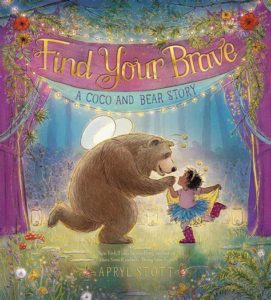
- Bravo, Little Bird! by Annie Silvestro and illustrated by Ramona Kaulitzki
- Gilly’s Monster Trap by Cyndi Marko
- Bitsy Bat, School Star by Kaz Windness
- The Dreams We Made by Lisa Bentley
- …and many, many more!
RVC: Okay, Catherine. It’s time for the LIGHTNING ROUND. Zippy questions and zoomy answers, please. Are you ready?
CL: Bring it on!
RVC: Gilmore Girls…great TV show or the greatest TV show?
CL: Great TV show—it’s a classic but it does have its flaws.
RVC: Most underappreciated Gilmore Girls character?
CL: That’s a tie between Kirk and Lane! Kirk is great comedic relief, and Lane is the BFF that Rory never deserved or truly appreciated, I think.
RVC: Favorite recipe from (or inspired by) the show?
CL: I own the Gilmore Girls recipe books! So, I have to say Sookie’s blueberry lemon shortcake was delicious!
RVC: What’s your most important good habit/routine as an editor?
CL: Never answering work emails on the weekend. It’s a good habit, to help keep a healthy balance between my professional and personal life.
RVC: A favorite picture book of 2021 that you didn’t edit?
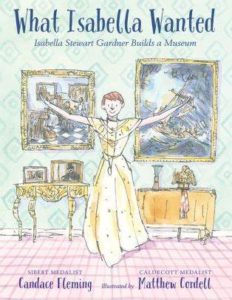 CL: What Isabella Wanted: Isabella Stewart Gardner Builds a Museum by Candace Fleming and illustrated by Matt Cordell.
CL: What Isabella Wanted: Isabella Stewart Gardner Builds a Museum by Candace Fleming and illustrated by Matt Cordell.
RVC: Your picture book philosophy in five words or fewer?
CL: It needs an emotional hook.
RVC: Thanks so much, Catherine.
CL: Thank you for this opportunity!

